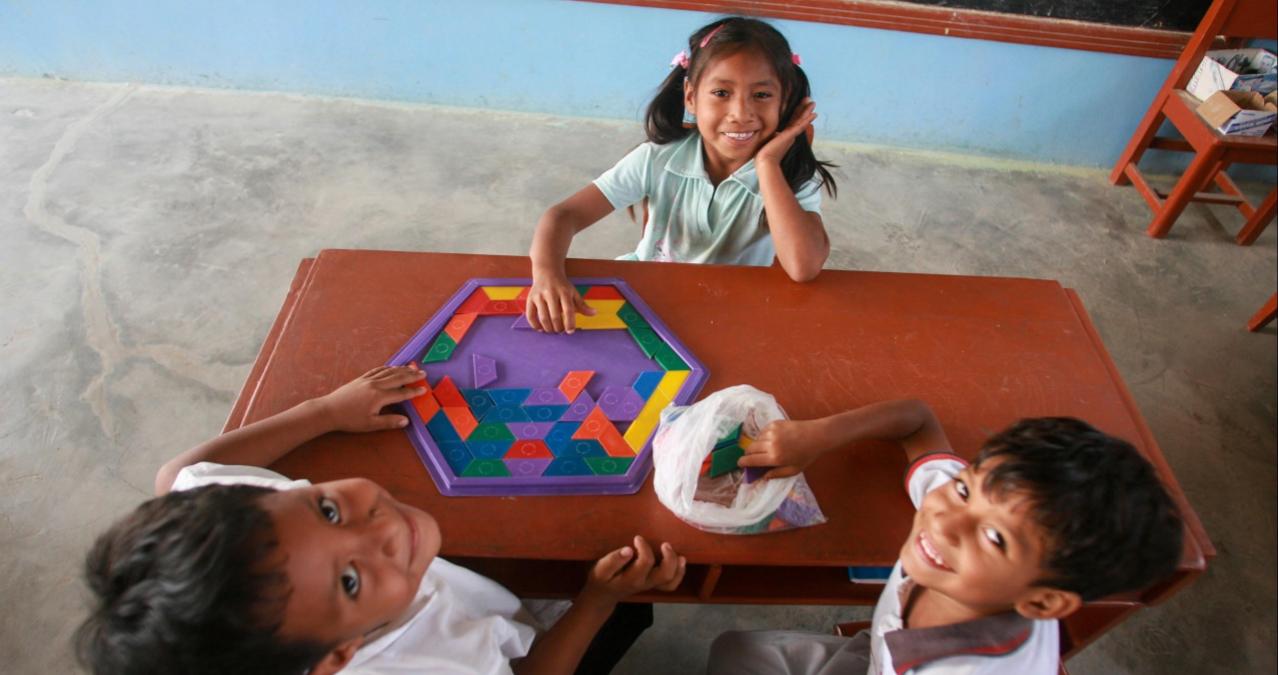Young Lives is a longitudinal study that follows the livelihoods of two cohorts of children born between 1990s and 2000s.…
The qualitative approach of the Young Lives study in Peru has been able to capture the changes in the biographies of 51 children. Their voices allow us to understand how they face realities, responsibilities, and risks during the time in their lives when school is the main component. Their experiences let us reflect on Sustainable Development Goal 4, related to inclusive and quality education. In this blog, we present some key qualitative insights from the study in Peru.
When Lupe, a seven-year-old urban girl, transitioned from pre-school to first grade, she had difficulties in adapting. She changed from an environment in which the focus was on play, to one where discipline loomed large. “Here [in primary school] it is not like pre-school. It is like an assembly; there are not so many toys. I would like it if there were more toys here”, she told us.
It is experiences like Lupe’s that are captured by the qualitative element of the Young Lives study, which, alongside qualitative methods, seek to maximise the full potential of the longitudinal research. The study captures the lived experiences of the children, their families, and communities over the course of 15 years. In Peru, the qualitative research was conducted between 2007 and 2014 in four locations, two rural and two urban.
Educational transitions
The qualitative study found that educational transitions were identified by the children as some of the most formative moments in their life.
In the case of the transition to first grade in school, the research found a lack of continuity between preschool and primary education. Children found it difficult to adapt to a new environment, in which, for example, playing is no longer part of the classroom dynamic.
But transitions to secondary school can also be tough. The distance to the secondary school, as well as the social and cultural differences, can hinder the adaptation process. In this sense, the role of peers is fundamental. Elmer, a rural boy who moved from Rioja to Lima to start secondary school, highlighted in a study that a friend was a major help in adapting to the new environment: “I thought it was going to be ugly, because I had no friends (…) but it wasn’t like that (…) I met a friend, he helped me (…)”.
We also analysed the entire educational trajectory of the children of the Older Cohort (born in 1994/5) and found that gender plays an important role in whether young people continue with their education after secondary school. Girls from low-income families’ access higher education but with less support than boys. Eva, a rural girl from Andahuaylas, had always performed well in school, but her parents preferred to invest in their son’s education because he was the eldest child and a boy.
Children’s Wellbeing
Our research has corroborated that, especially in the most deprived areas, education carries the promise of breaking the status quo and improving living conditions. In a group conversation with Young Lives children about their understanding of wellbeing, a boy from Rioja defined wellbeing as someone who does well in life, who is studious, diligent, and responsible, and for that reason, is able to improve their family’s economic situation. “He dreams of completing his higher education, to have a career and to ‘return the favour’ of his parents, helping them when they are older”.
Nevertheless, evidence has shown that wellbeing is not limited to access to formal education. Instead, it is determined by how boys and girls evaluate their opportunities while they grow and confront the beginning of adulthood.
Children’s experience of violence through life is related to wellbeing too. We have reported that children are exposed to violence across multiple spheres: at home, at school or in the community.
Social norms and beliefs in the community setting allow the use of violence to “correct” children. José, a boy from an urban site said: “If we are punished, it is because we deserve it because we have done something wrong.” Violence as a valid mechanism for correcting their behaviour has a negative impact on children’s capacity to question it.
Voices for changing the future
Children’s experiences on their own lives show the importance to provide safe, nonviolent, inclusive and effective learning environments for all in order to realise sustainable development goals. The longitudinal analysis in Peru shows that despite the almost universal access and the high value of education, quality and gender disparities, especially in poor families, are still a challenge.
A longitudinal qualitative study such as Young Lives shows that children are not simply passive recipients of social change. They are subjects, who navigate very actively through their lives, and their voices must be heard in order to achieve SDG4.
About the author:
Vanessa Rojas has a degree in Anthropology and a Master’s degree in Political Science from the Pontifical Catholic University of Peru. Currently, she is an Adjunct Researcher at GRADE and the Coordinator of the Qualitative Component of Young Lives in Peru.
Text editor: Gabriela Keseberg Dávalos


